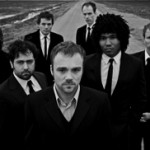 So how does one of the top television-scoring professionals in the business get to where he is today?
So how does one of the top television-scoring professionals in the business get to where he is today?
If you’re Jon Lee, first you run a hedge fund for 15 or 20 years…
Huh?
You’ll have to forgive Jon for not taking a more traditional route to the top of the film and television-scoring business. He found his true calling a bit later in life than most. But that hasn’t stopped him from making quite a name for himself in the field.
Although Jon started out in finance, it became a job he ended up “totally hating.” During his last few years in the business, he decided to do something about it and began pursuing his avocation: learning to play music. He took piano lessons, which eventually led him to composing. With the music bug firmly in his system, he soon enrolled at the University of Southern California’s Thornton School of Music, where he studied with many well-established composers.
Jon got his Graduate Certificate in Scoring for Motion Pictures and Television, marking the formal end of his career in finance, and set out to land some initial gigs. He soon connected with fellow USC alum Timothy Michael Wynn, a hardcore SONAR user who co-founded the music production company Sonic Fuel. Jon went to work with Tim and his partner Chris Lennertz for about a year, “’til they kicked me out and said ‘go get a career,’” as Jon jokingly recalls.



